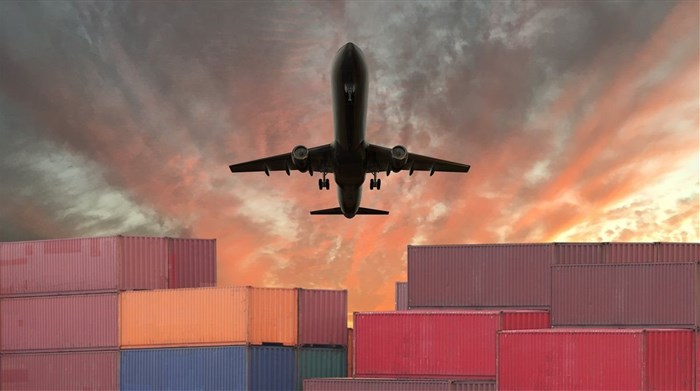
Top stories




For example, a computer chip shortage had a knock-on effect across many industries. Concerns have been also been raised about everything from lithium supply for electric vehicle batteries to restaurant food supplies to even coffee shortages.
Never has the issue of supply chain management been so prominent. The question now is what challenges supply chains face in the year ahead. So what can we expect?
Products reach consumers through a chain of companies involved, which typically includes manufacturers, logistics firms – who provide storage, distribution and transport – and retailers. Not surprisingly, the whole system is highly complex.
There’s a whole philosophy of contemporary supply chain management (SCM) concerned with making supply chains much more integrated than they used to be. Done well, it can significantly improve the overall performance of companies, as well as benefiting the economy and society. Yet this long-term effort to make the whole system more efficient has been set back by a whole host of challenges in global supply chains.
Three big issues became particularly apparent in 2021. First, and probably the most obvious to many of us, was the unprecedented pressures on global supply chains created by the Covid pandemic and the subsequent series of lockdowns and restrictions which varied in their timing and severity from country to country.
This has resulted in significant geographical shifts in supply and demand, which in turn has created problems for finely tuned global supply chains. Trends that were apparent pre-pandemic, such as increases in online shopping and driver and other skill shortages, are now causing real problems.
Second, the economic and business environment became more challenging. For example, in the UK and the rest of Europe, supply chain pressures were caused by Brexit as a result of increases in red tape and cross-border checks. More widely, firms continue to grapple with a range of international business challenges ranging from fluctuating exchange rates to the building of global management teams.
This all matters because business has become increasingly international – often global – in recent years. This is thanks to the reduction of traditional barriers to the cross-border movement of products, services, capital, people and information. The impact of this change on logistics and SCM is the subject of my book Global Logistics: New Directions in Supply Chain Management.
Third, the environmental impact of logistics and supply chain activities is beginning to be more widely understood. If countries around the world are to meet their emissions targets and commitments, it is key that they develop more sustainable supply chain practices. Glasgow’s COP26 in November had a strong focus on transport including freight and logistics. Business as usual is simply no longer an option if a sustainable future is to be achieved.
But uncertainty is a characteristic of the international business landscape in which supply chains operate. As a result, major companies have become strongly focus on supply chain risk management. This means identifying where risks of any kind exist in the network, assessing the potential impact of these risks, and putting mitigation strategies into place. A range of formal methodologies and tools have been developed to support this process.
The big question is how all this complexity can be handled, particularly in terms of design, planning and execution. These challenges are new in many respects, so past experience cannot be relied upon to generate solutions.

So what kinds of things are going to affect global supply chains in 2022? As The Economist neatly put it recently, "the era of predictable unpredictability is not going away".
The arrival of omicron has provided a timely reminder of the unpredictability of the pandemic. The emergence of new variants during 2022 could accentuate some of the current pressures. In this context, China’s continuing zero-COVID strategy with its tight border restrictions could create problems.
Despite some easing in recent months, international shipping costs are likely to remain high in 2022. Closer to home, the arrival of the full post-Brexit customs checks introduced on January 1 has introduced further friction and added costs, with many firms reporting a worrying lack of preparedness.
Above all, freight transportation and supply chain processes will continue to change during 2022 as more environmentally sustainable practices are adopted. These practices affect everything from transport vehicles, such as switching to electric delivery vans, through to changes in the wider supply chain, such as relocating distribution centres to minimise distances travelled.
Industry and academia are collaborating to develop innovative and sustainable practices, as can be seen in the work of the Centre for Sustainable Road Freight, for example. The year ahead will be key in the adoption of these practices, each of which requires change in the operational practices of firms. Such change will inevitably create short-term challenges as the new practices become embedded.
Business has to be resilient and capable of adapting to major disruptions so that it can develop long-term strategies and solutions to these complex challenges. In the meantime, shoppers are likely to see higher prices, with companies passing on increased shipping and other logistics costs to customers. We may continue to notice things missing from our supermarket shelves – new year product shortages are already being reported in some countries. So as consumers, we are going to have to keep being a bit more resilient ourselves.
This article is republished from The Conversation under a Creative Commons license. Read the original article.![]()

The Conversation Africa is an independent source of news and views from the academic and research community. Its aim is to promote better understanding of current affairs and complex issues, and allow for a better quality of public discourse and conversation.
Go to: https://theconversation.com/africa